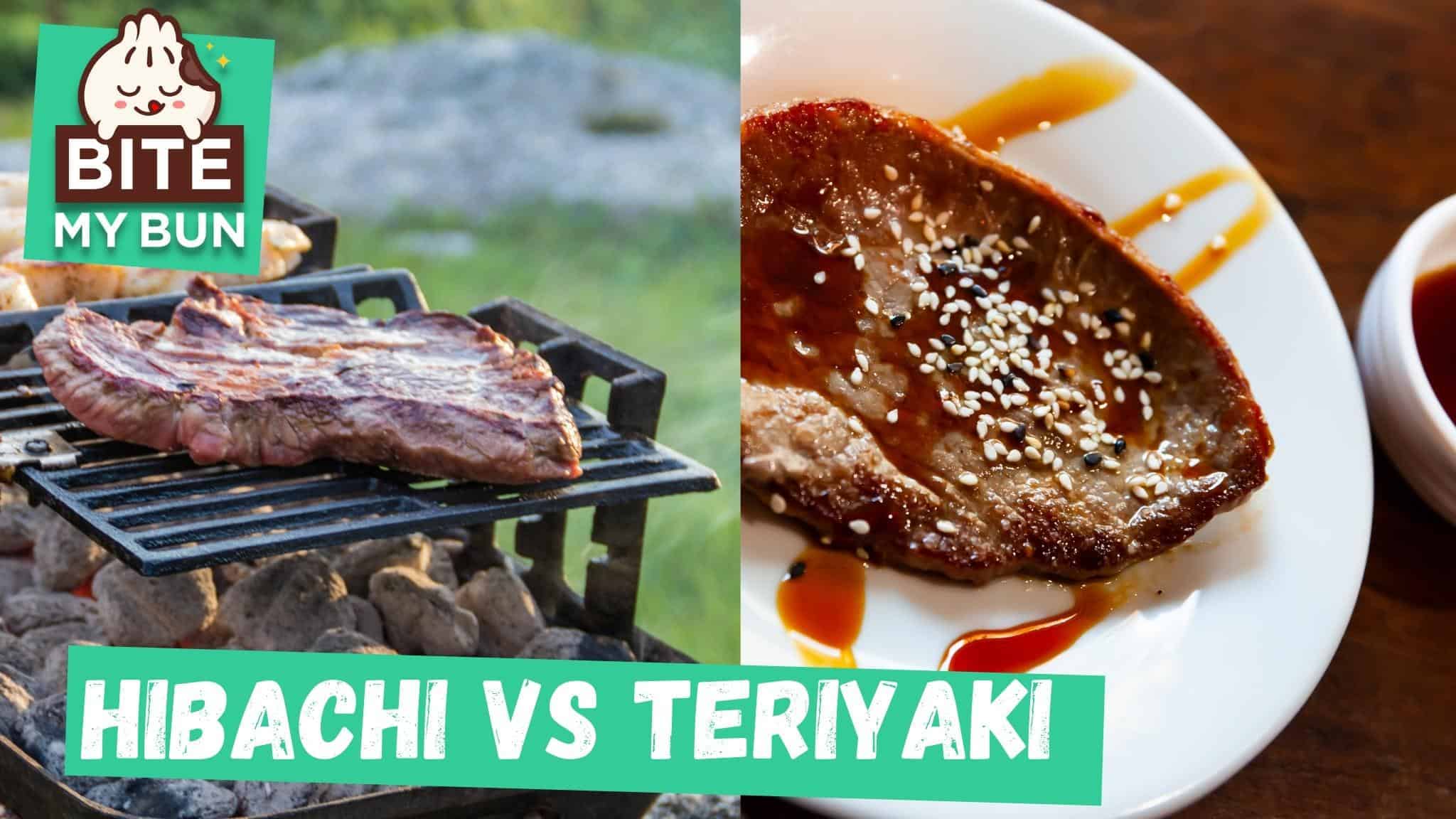The difference between teriyaki vs hibachi explained
What’s the difference between teriyaki and hibachi? You might have seen both at the Japanese restaurant in town.
Teriyaki is translated to “glossy grilled.” and refers to the sweet and spicy soy-based sauce used to get the glazed finish when grilling. Hibachi refers to the cooking style of grilling over charcoal. You can grill teriyaki on a hibachi grill, although hibachi dishes usually are less sweet.
Let’s look at these differences more closely.


Check out our new cookbook
Bitemybun's family recipes with complete meal planner and recipe guide.
Try it out for free with Kindle Unlimited:
Read for freeSpices in hibachi differ from teriyaki
The main dry spices found in hibachi’s cuisine is garlic ginger and sesame oil. Choice of steamed white or brown rice on fried rice with egg yolks.
Switch meat and veggies to meat proteins to get plenty of protein in your diet. The main difference in the taste of fried rice is using butter with MORE soy sauce whereas Chinese rice is in most cases less soy sauce (sometimes none) and more fats or oil.
The term Hibachi describes both the cooking method grilled and the main dishes used for cooking on its surfaces. A teriyaki term does not describe the cooking process in question.
Hibachi and Teriyaki dishes are very similar but differ in the types of sauce used in cooking.
What seasoning do they use in hibachi?
Soy sauce, sesame oil and sesame seeds are also used as a hibachi recipe. Garlic is the major ingredient that flavors meat and vegetables. Soy sauce and other ingredients are often used depending on what’s cooking in the dish.
The sweetness of teriyaki
Teriyaki is a culinary system that is used in Japan where dishes are broiled or grilled with the glaze of soy sauce, mirin and sugar.
The word teriyaki originates from the predicate teori ( ) and yaki ( ). The word refers to shine or luster given by the sugar content in sugar.
The sauce is boiled and reduced at the requested thickness used for preserving meat, which is then grilled and broiled. The tare is traditional prepared by mixing and heating soy soup with sake (or mirin) and sugar (or honey.
Check out our new cookbook
Bitemybun's family recipes with complete meal planner and recipe guide.
Try it out for free with Kindle Unlimited:
Read for freeJoost Nusselder, the founder of Bite My Bun is a content marketer, dad and loves trying out new food with Japanese food at the heart of his passion, and together with his team he's been creating in-depth blog articles since 2016 to help loyal readers with recipes and cooking tips.
